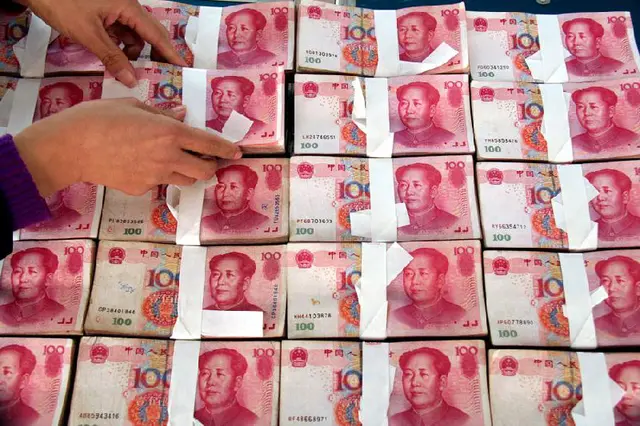The spot exchange rate of CNY/USD dropped below 6.7 last night, setting a new low since November 2010. Yesterday, the central parity rate of CNY/USD plummeted by 159 base points to 6.6961, a new low for a half and five years. Besides influence from recently disclosed economic data and increasing demands for overseas investment, the “anchor” to stabilize expectation on RMB exchange rate faces challenges from market factors, which may push low the RMB.
“The central parity rate of CNY/USD is still determined by pricing mechanism, but U.S. dollar index surged last Friday to bring more pressure on RMB depreciation in the spot market on Monday,” foreign exchange trader indicated.
The so-called mental point of investors at 6.7 may not be the detailed one that regulators want to keep, and they are possibly eager to see rich market liquidity, proper stabilization of RMB exchange rate, controllable depreciation pace and etc., the said trader pointed out at the meantime.
Combined with current market views, the exchange rate of CNY/USD dropping below 6.7 last night are mainly caused by the following factors. Firstly, the latest import & export data of foreign trade shows that export continues to weaken, and the market concerns on weak external demands, which bring pressure on RMB’s medium and long term depreciation.
Secondly, the demands for overseas investment are hot. “Investors’ sentiment is influenced under RMB depreciation expectation, and it is certain that investors will pursue for opportunities in overseas asset allocation, including the U.S. dollar.” According to wealth manager at a foreign bank, overseas asset allocation by various channels will become an increasingly obvious trend, which is inevitable to press on selloff of RMB-based assets, and create unfavorable environment for RMB trend.
Thirdly, newly issued foreign exchange reserve figure is not that low as the market previously expected, showing a growth. Analyst believed that, supported by this, the market, on the contrary, will start to accept further RMB depreciation.
Meanwhile, the “anchor” to stabilize the RMB exchange rate also faces challenges. A mechanism of “closing price + a basket of currencies” always plays a significant role in recent RMB exchange rate market. Market insiders indicated that a basket of currencies plays a role as the “anchor” in a short term, and stabilizes the market expectation to some extent.
However, under the exchange rate formulation mechanism based on closing price, the RMB exchange rate follows the capital flow orientation; in terms of exchange rate system based on a basket of currencies, the RMB exchange rate is determined by relative prices of many other currencies, and its fluctuation is more closely related to trade balance.
The global financial market fluctuates after Brexit vote, with larger pressure on RMB depreciation. CFETS RMB exchange rate index slight increased to 94.38, according to data of last week issued yesterday. But the RMB exchange rate indices referenced to the BIS basket and the SDR basket continued to slightly decline to 95.33 and 95.37 respectively. The real effective RMB exchange rate in June decreased 1.64 percent to 123.14 when compared to a drop of 0.86 percent last month, setting a low new for the latest 20 months, the latest BIS data shows.
Some institutions also lower the RMB expectation recently. RMB exchange rate will continue to be under pressure in the future, but is expected to gain a depreciation bottom line, Liu Ligang, chief China-related economist at research department of Citibank, said. He also indicated that great depreciation of CNY/USD exchange rate may cause extremely unstable exchange rates of emerging market currencies, as the former one is determined by a basket of currencies. Therefore, although RMB faces a downtrend, it will possibly supported by a bottom line.
(APD/XH FINANCE)
 简体中文
简体中文

